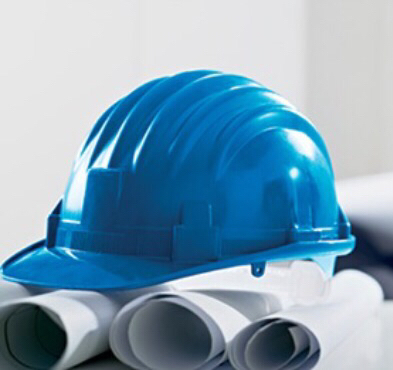Information
-
Audit Title
-
Client / Site
-
Conducted on
-
Prepared by
-
Location
-
Personnel
1. Working at Heights
-
1.1. Employees properly protected from fall risks of 6 feet or more?
-
1.2. Unsafe, missing, or incomplete edge protection?
-
1.3. Guard rails installed properly and complete to include toe boards for overhead protection?
-
1.4. Warning lines/Barricades installed properly and complete.
-
1.5. Personal fall arrest equipment appropriate for exposure and used properly.
-
1.5.1. Unsafe or damaged harness or equipment?
-
1.5.2. Unsafe or uncertified anchor points?
-
1.5.3. Personal fall arrest will not allow contact with next lower level or hazardous equipment and no swing fall?
-
1.6. Fall exposure and mitigation appropriately addressed in ADM JSA?
-
1.7. Fall protection/arrest components stored/stowed properly?
2. Equipment
-
2.1. Unsafe or damaged tools/equipment?
-
2.2. Tools/equipment in proper working order and used properly, with required guards and handles in place?
-
2.3. Proper tools/equipment for job readily available and in use? (e.g. grinding discs for cutting)
-
2.6. Operators trained in safe operation, clean-up and maintenance?
-
2.7. LOTO procedures for cleaning, servicing and maintenance of tools/equipment conducted per policy and verified?
-
Aerial work platform used properly / per manufacturer requirements?
-
Aerial work platform has documented pre-use inspection?
-
Proper fall protection in place for use of aerial work platform, including closed gate
3. Scaffolds
-
3.1. Competent persons only erecting/altering scaffold?
-
3.2. Scaffold provided as complete as conditions practically allow?
-
3.3. Inspection for scaffold completed prior to use by competent person.
-
3.4. Scaffold erected properly to include proper bracing and tie-back?
-
3.5. Safe Work Load (SWL) provided and not exceeded? (tools, stored materials, number of persons)
-
3.6. Scaffold tagged properly with appropriate use information.
-
3.7. Scaffold provided with suitable access, to include swing gate and retractable where exposure exceeds 24'?
4. Lifting/Rigging Equipment
-
4.1. Unsafe or damaged crane or other lifting device.
-
4.2. Loads lifted over persons, close proximity to obstacles incl. overhead power lines?
-
4.3. Maintenance, testing and inspection completed as required prior to use.
-
4.4. Piece weights provided and load calculations conducted prior to lift?
-
4.6. Unsafe or damaged lifting equipment, including ropes, slings, chains, hooks?
-
4.7. Lifting equipment unlabelled, does not meet ANSI, no SWL displayed?
-
4.8. Rigging equipment used per manufacturer requirements?
-
4.9. Operator properly trained/certified?
-
4.10. Safe rigging practices followed?
-
4.11. Properly trained rigger?
6. Ladders
-
6.1. Unsafe or damaged ladders?
-
6.2. Unsafe positioning of ladders?
-
6.3. Ladder not properly secured?
-
6.4. Ladder unsuitable for job? (e.g. metal ladder used for electrical work)
-
6.5. Ladder proper tool for job?
-
6.6. Ladder provided with legible manufacturers labels and free of inspection obstructions (paint, stickers, etc.)?
7. Hazardous Manual Tasks
-
7.1. Stretching conducted at beginning of shift?
-
7.3. Inadequate risk controls? (examples: no job rotation, lighter loads, trolleys, lifting equipment, etc)
-
7.4. Lack of training in risk controls and safe lifting/ team lifting techniques?
-
7.5. Alternatives to manual material handling evaluated in JSA?
8. Hazardous Chemical (including fuel and oil)
-
8.1. Unsafe storage location? (e.g. flammables near ignition sources, spills could enter stormwater drains, etc)
-
8.2. Incompatible chemicals stored near each other?
-
8.3. Inadequate spill containment equipment?
-
8.4. Safety Data Sheets accessible on site?
-
8.8. Insufficient, or incorrect, PPE?
-
8.9. Unsuitable storage containers? (unlabeled or stored in food containers)
9. Confined space entry
-
9.1. Entry policy followed?
-
9.2. Emergency rescue available to require external rescue?
-
9.3. Appropriate atmospheric testing conducted and documented?
11. Personal Protective Equipment (PPE)
-
11.1. Required PPE available and in use (including sun protection)?
-
11.2. PPE appropriate for exposure?
-
11.3. Trainig in safe use, clean-up and inspection of PPE?
12. Work Environment
-
12.1. Lack of/or inadequate amenities? (toilets, wash areas, lunch rooms, etc)
-
12.2. Insufficient lighting?
-
12.3. Inadequate housekeeping?
-
12.4. Lack of, or inadequate noise/ vibration control?
-
12.5. Site security and signage?
-
12.6. Suitable overhead protection provided?
13. Electrical Hazards
-
13.1. Unsafe electrical leads? (damaged, out of test date or untested)
-
13.2. Assured grounding requirements acceptable and followed.
-
13.3. Underground utilities located and uncovered by hand prior to excavating?
-
13.4. Minimum distances from overhead electrical lines delineated and maintained.
-
13.5. Temporary electrical panels without voids, labeled, and GFCI protected?
-
13.6. Leads and cords properly suspended?
-
13.7. Electrical equipment in wet conditions or conditions that can become wet GFCI protected?
-
13.11. Electrical leads grounded directly to work?
15. Administrative Procedures
-
15.1. ADM JSA completed and fully addresses exposures?
-
15.2. Failure to obtain permits (Council, EPA, Hot Works, Confined Space etc)
-
15.3. Suitable orientation for workers, contractors, visitors?
-
15.4. Lack or, or inadequate, supervisory arrangements?
-
15.5. Weekly safety meetings and OSHA required training conducted.
-
15.6. Contractor Job Hazard Analysis (JHA) completed?
Corrective Actions
-
Enter any corrective actions that will be undertaken
Sign Off
-
On site representative
-
Auditor's signature







